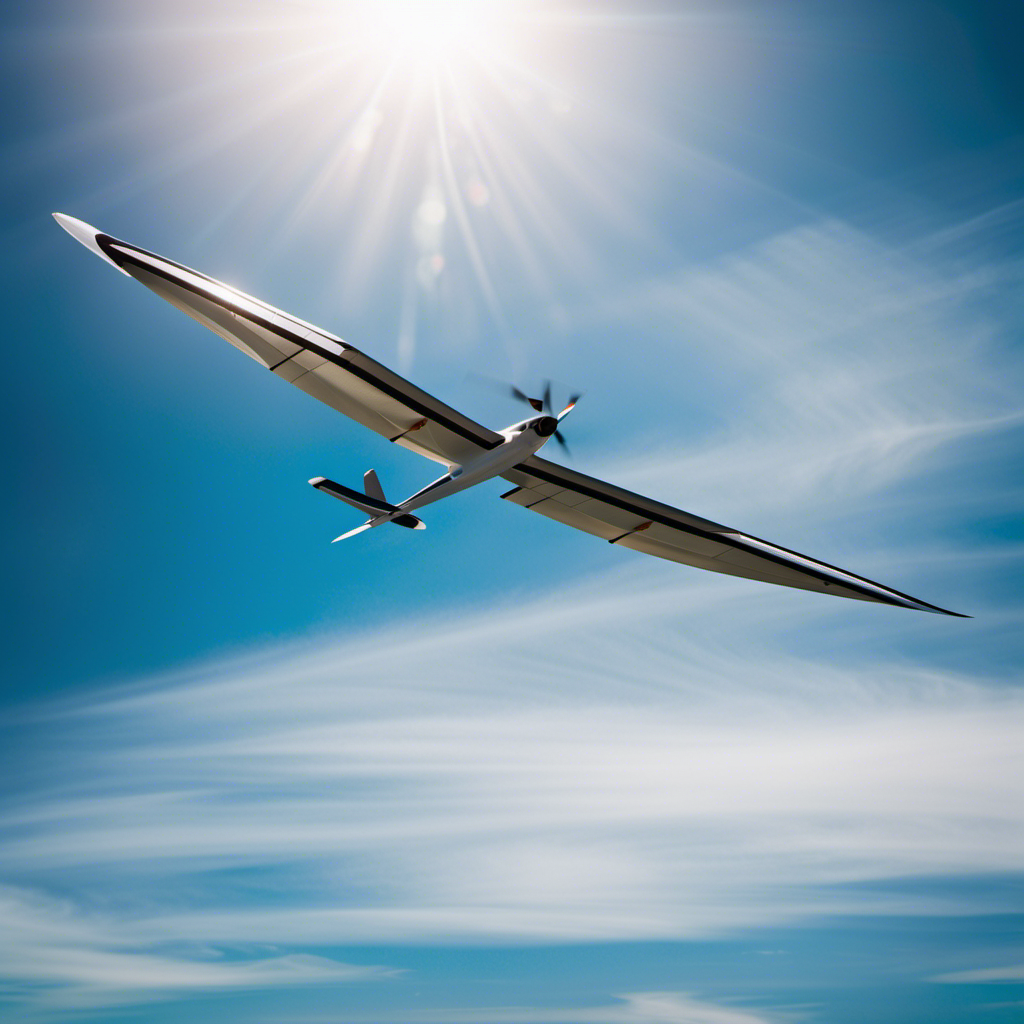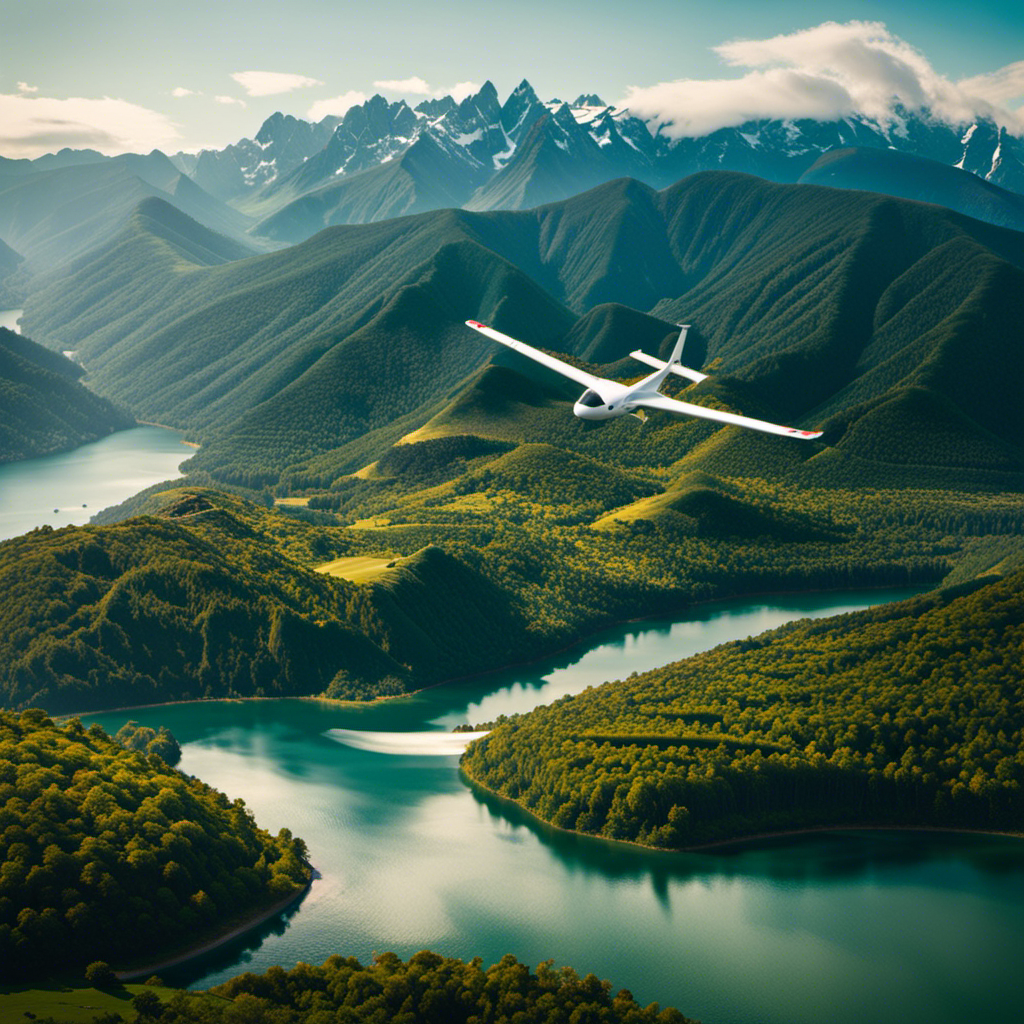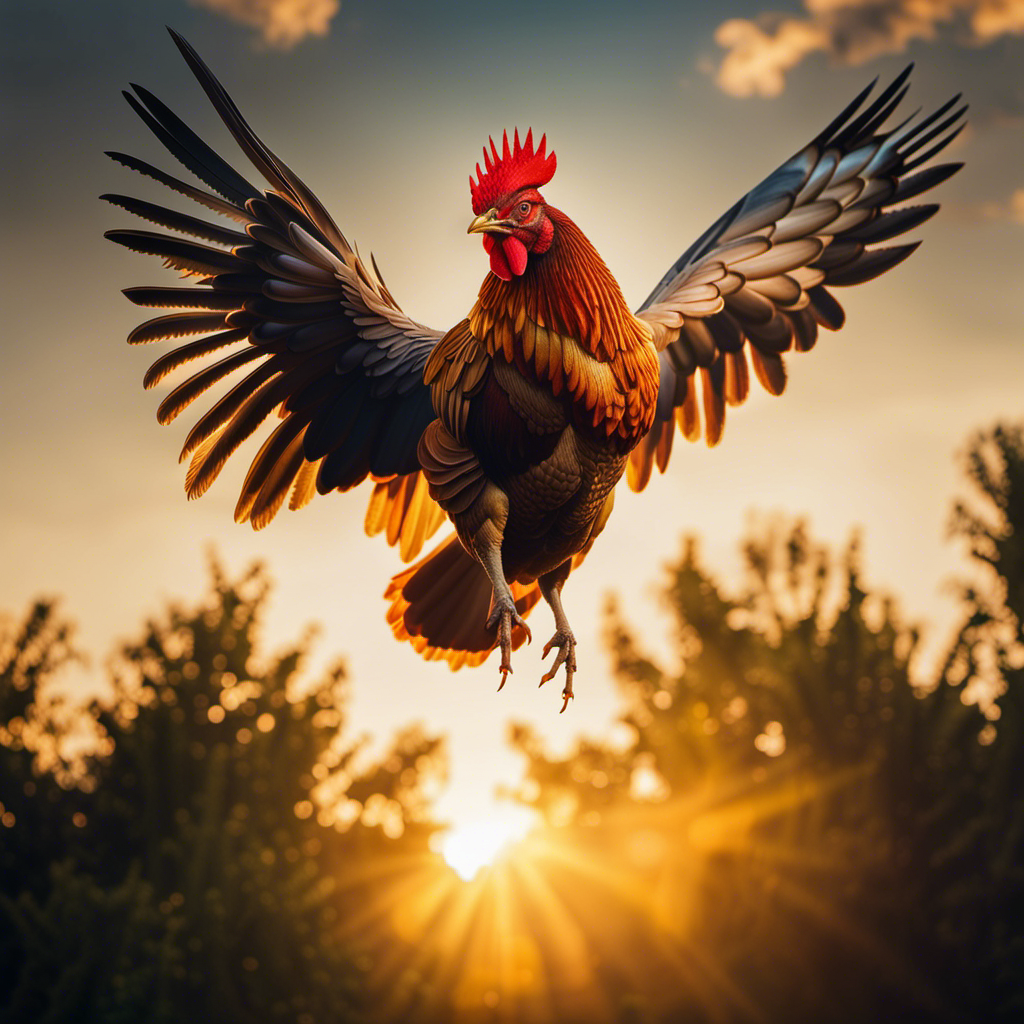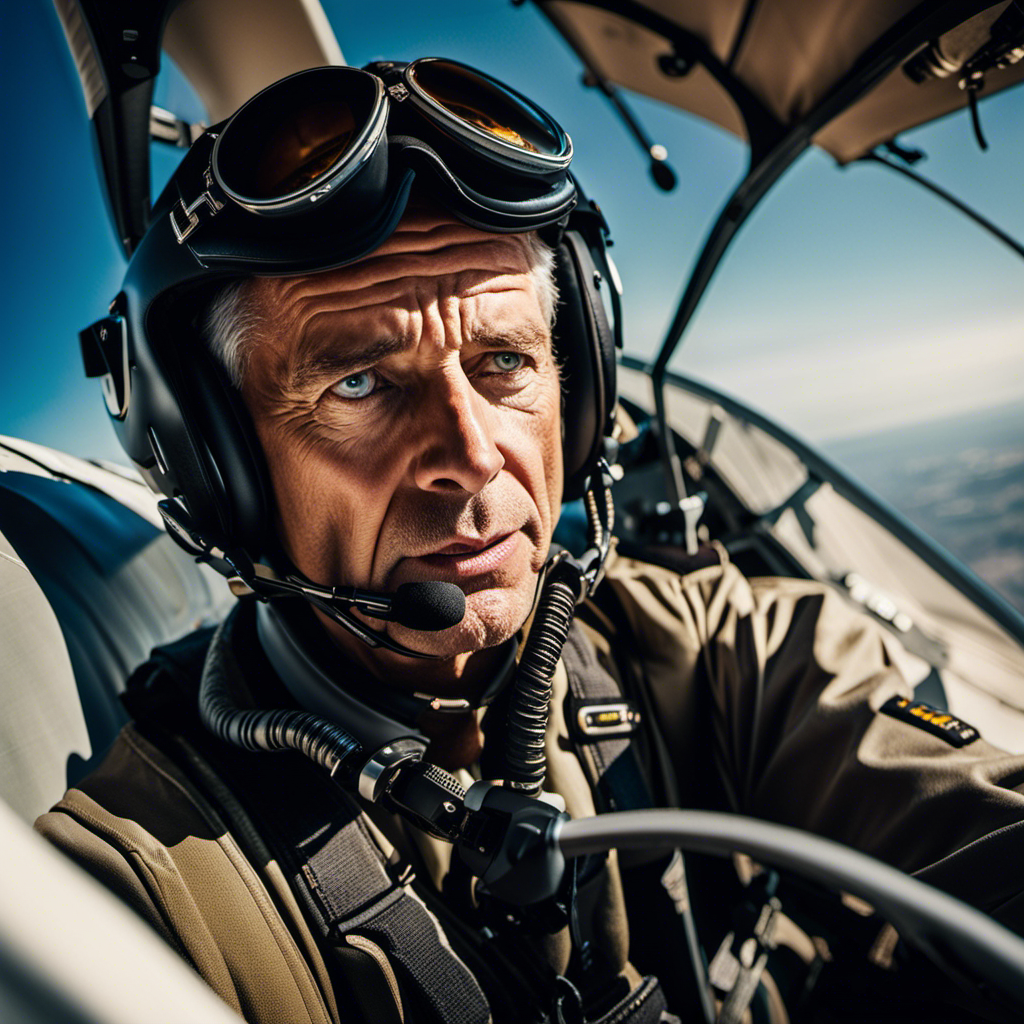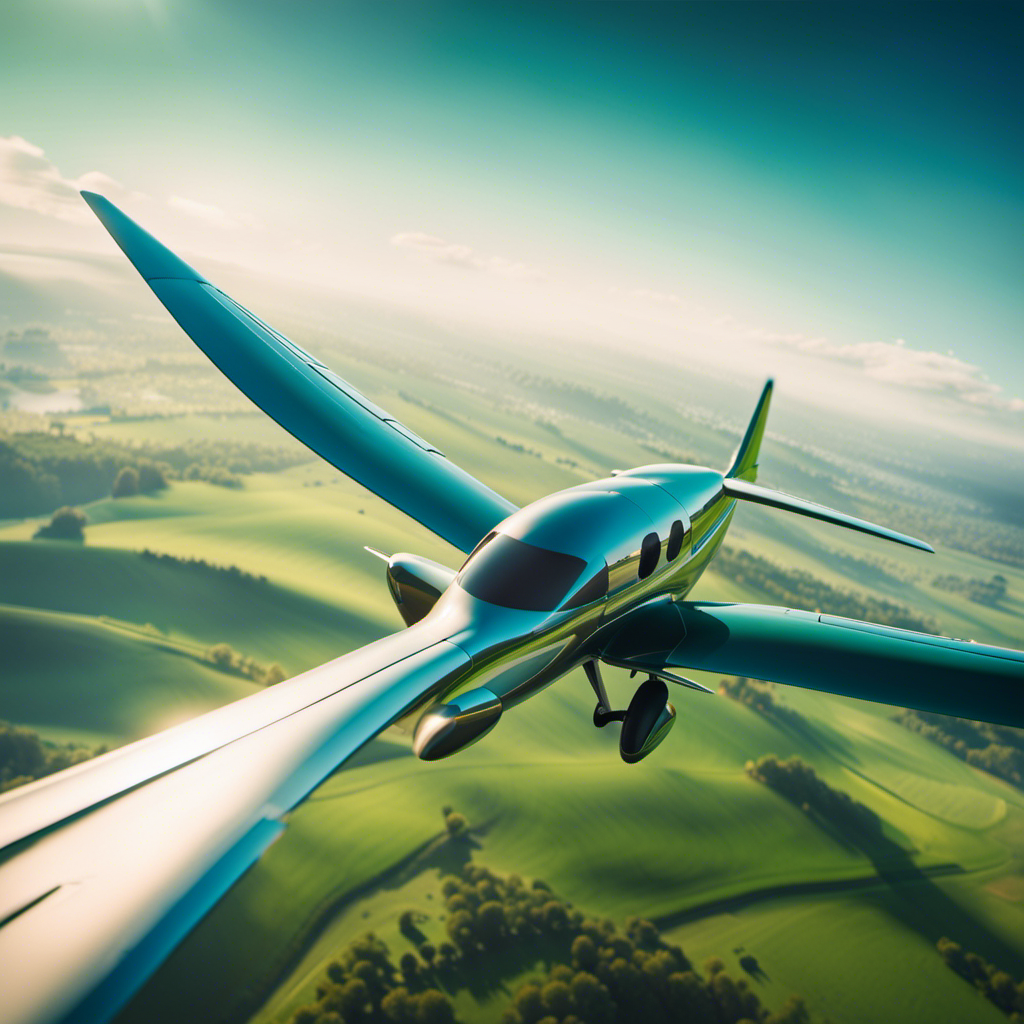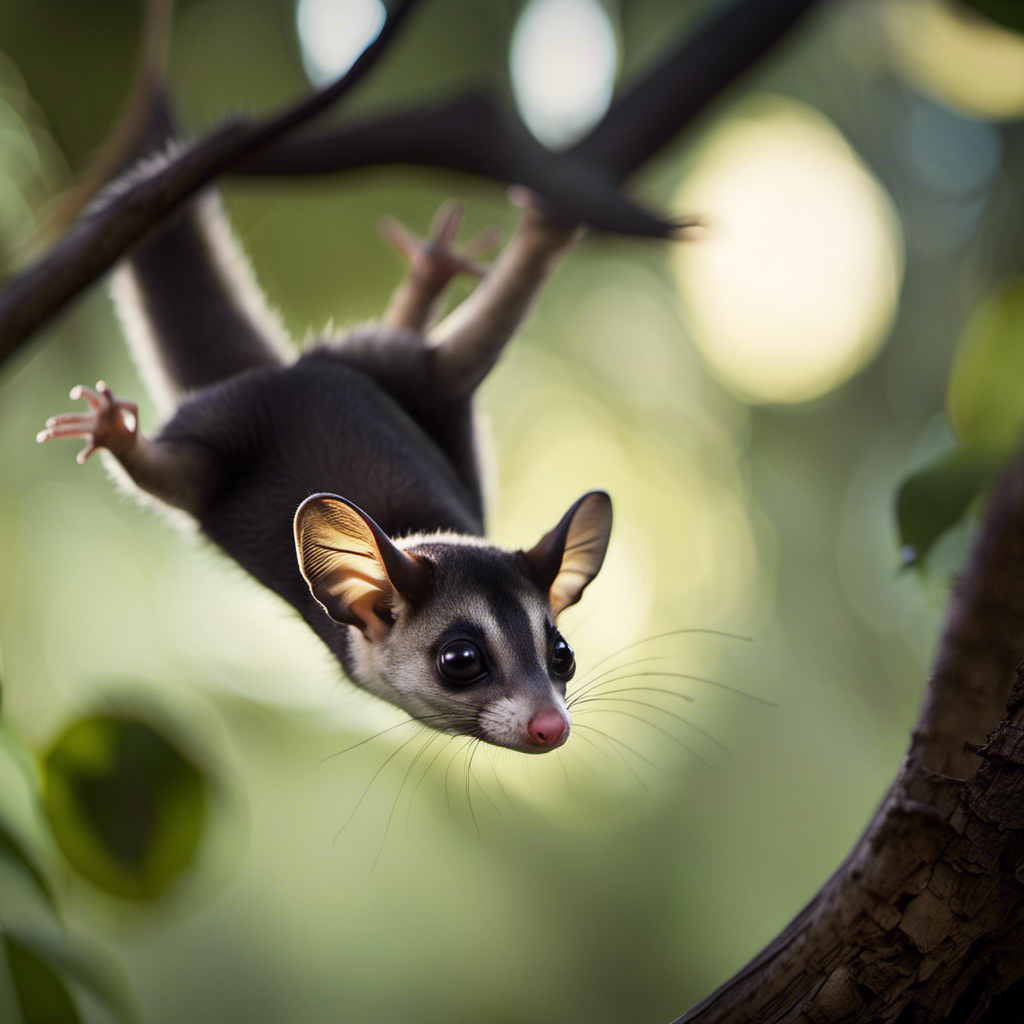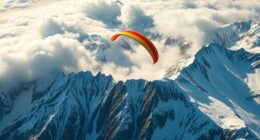As a lover of aviation, I have always been fascinated by the incredible opportunities offered by powered gliders.
Did you know that powered gliders can reach speeds of up to 150 miles per hour?
In this detailed review, I will delve into the mechanics, features, performance, and safety regulations of these remarkable aircraft.
Additionally, I will share my personal experience of flying a powered glider, comparing it to traditional gliders.
So, if you’re considering investing in a powered glider, join me on this comprehensive journey to determine if it’s the right choice for you.
Key Takeaways
- Powered gliders offer increased takeoff and climbing ability, giving pilots the freedom to choose when and where to take off and not being dependent on specific weather conditions.
- The combination of glider and engine allows for extended flight time and the flexibility to maintain altitude or climb, enabling pilots to cover greater distances and have more versatile flying options.
- Powered gliders provide easier access to takeoff and landing sites, eliminating the need for specialized infrastructure and offering expanded options for exploring new locations.
- While there is a higher initial investment due to the engine and components, the benefits of a powered glider include potential reduction in transportation costs, the ability to use the engine for training, and the elimination of specialized infrastructure requirements.
Introduction to Powered Gliders
When it comes to powered gliders, you’ll find that they offer a unique and exhilarating way to fly through the skies. Powered gliders combine the best of both worlds, as they have the ability to soar like a traditional glider and also use an engine for added power.
One of the main benefits of using a powered glider is the ability to take off without the need for a tow or launch. This allows pilots to fly whenever and wherever they choose.
Additionally, powered gliders are available in various types, including self-launching gliders and motor gliders. Self-launching gliders have an engine that allows pilots to take off independently, while motor gliders have a built-in engine for extended powered flight.
Understanding the mechanics of a powered glider is essential to fully grasp the capabilities and aerodynamics involved in this exciting aircraft.
Understanding the Mechanics of a Powered Glider
To understand how a powered glider works, you need to grasp the mechanics behind it.
A powered glider consists of several key mechanical components that work together to provide both lift and propulsion. At the core of the system is the power source, which can be either a gasoline engine or an electric motor. This power source drives a propeller, which generates thrust to propel the glider forward.
In addition to the propulsion system, the glider also has wings, a tail section, and control surfaces that allow the pilot to maneuver the aircraft. By manipulating these components, the pilot can control the glider’s speed, altitude, and direction.
Now that we understand the mechanics of a powered glider, let’s delve into its features and specifications.
Features and Specifications of the Powered Glider
If you’re looking for information on the features and specifications of a powered glider, you’ll find them right here. The powered glider is a remarkable aircraft that combines the best of both worlds – the maneuverability of a glider and the power of an engine. Let’s take a closer look at the features and specifications of this innovative aircraft.
| Features | Specifications |
|---|---|
| Efficient design | Wingspan: 15 meters |
| Electric motor | Maximum speed: 200 km/h |
| Lightweight construction | Range: 500 kilometers |
| Foldable wings | Takeoff distance: 200 meters |
| Cockpit with advanced avionics | Landing distance: 300 meters |
| Short takeoff and landing capabilities | Fuel capacity: 100 liters |
One of the main advantages of a powered glider is its efficient design, allowing for long-range flights and excellent fuel economy. Additionally, the foldable wings make transportation and storage a breeze. However, there are a few disadvantages to consider. The limited speed of 200 km/h may not satisfy those seeking high-performance aircraft, and the takeoff and landing distances may require larger runways. Nonetheless, the benefits outweigh the drawbacks, making the powered glider a popular choice for recreational pilots and aviation enthusiasts.
With its impressive features and specifications, the powered glider sets the stage for exceptional performance and speed.
Performance and Speed of the Powered Glider
The powered glider’s impressive performance and speed make it a top choice for aviation enthusiasts. When it comes to performance analysis, this aircraft delivers exceptional results. Its ability to soar through the skies effortlessly is a testament to its engineering prowess.
With a powerful engine and efficient aerodynamics, the powered glider can reach impressive speeds, allowing pilots to cover long distances in a shorter amount of time. In terms of speed comparison, this aircraft outperforms many other gliders in its class. Its agility and responsiveness make it a joy to fly, providing an exhilarating experience for pilots.
However, it’s important to note that safety features and regulations for flying a powered glider are equally crucial to consider.
Safety Features and Regulations for Flying a Powered Glider
When flying a powered glider, it’s important to familiarize yourself with safety features and regulations to ensure a safe and enjoyable experience. Safety regulations are crucial for the well-being of both the pilot and passengers.
Before taking flight, conduct a thorough pre-flight inspection. Check that all safety mechanisms, such as seat belts, emergency exits, and fire extinguishers, are in proper working order. It’s also important to understand flying precautions, such as maintaining a safe distance from other aircraft, being aware of weather conditions, and following air traffic control instructions.
By following these safety regulations and taking necessary flying precautions, you can minimize risks and ensure a safe flight.
Now, let’s discuss the training and certification requirements for piloting a powered glider.
Training and Certification Requirements for Piloting a Powered Glider
To pilot a powered glider, you’ll need to undergo training and obtain the necessary certification. There are several training programs available that cater to individuals with varying levels of experience. These programs typically cover a range of topics such as aerodynamics, flight controls, weather analysis, emergency procedures, and navigation.
The licensing process involves both written and practical exams to ensure that you have a comprehensive understanding of the principles and techniques involved in flying a powered glider. Once you have successfully completed the training and passed the exams, you’ll be awarded a pilot’s license specifically for powered gliders.
This license allows you to legally operate a powered glider and begin the exhilarating experience of flying through the skies, feeling the wind beneath your wings and the freedom of soaring above the world below.
The Experience of Flying a Powered Glider
Flying a powered glider is an exhilarating experience that allows you to feel the wind beneath your wings and the freedom of soaring above the world below. With the added advantage of a motor, powered gliders provide the ability to take off and climb without relying solely on thermals or winches. This makes them more accessible and convenient for pilots, as they can fly in a wider range of weather conditions.
The motor also provides the ability to extend flight time and cover longer distances, giving pilots the opportunity to explore new areas and embark on cross-country adventures. However, there are some disadvantages to consider. The motor adds weight and complexity to the glider, which can affect its performance and maneuverability. Additionally, the reliance on an engine means increased maintenance and operating costs.
Despite these drawbacks, flying a powered glider offers a unique and thrilling experience for aviation enthusiasts.
Transitioning into the subsequent section about comparing powered gliders to traditional gliders, it is important to analyze the key differences between these two aircraft.
Comparing Powered Gliders to Traditional Gliders
If you’re considering a traditional glider, you’ll find that it relies solely on thermals or winches for takeoff and climbing, which can limit your flying opportunities. However, with a powered glider, you have the advantage of an engine that provides additional power, allowing you to take off and climb without depending solely on external factors. This opens up a whole new world of possibilities for flying, as you can choose when and where to take off, without having to rely on specific weather conditions or access to a winch. Additionally, powered gliders offer the flexibility of soaring for longer periods of time, as you can extend your flight by using the engine to maintain altitude or even climb.
Now let’s delve into the cost comparison of powered gliders versus traditional gliders. While the initial investment for a powered glider may be higher due to the engine and associated components, there are several factors that can offset this cost. Firstly, powered gliders allow for easier access to takeoff and landing sites, eliminating the need for specialized infrastructure such as winches or airfields. This can lead to lower operating costs in the long run. Secondly, powered gliders offer the ability to cover greater distances, making them more versatile and potentially reducing transportation costs to different flying locations. Lastly, the engine in a powered glider can be used for training purposes, allowing for a more efficient and cost-effective transition from traditional gliding to powered flight.
Maintenance and Care for a Powered Glider
Maintaining and caring for a powered glider is essential for ensuring its optimal performance and safety. As a pilot and enthusiast, I have learned the importance of regular maintenance and attention to detail.
Here are some maintenance tips and a troubleshooting guide to help you keep your powered glider in top shape:
- Regularly inspect the aircraft for any signs of wear or damage, paying close attention to the engine, propeller, and control surfaces.
- Keep a detailed maintenance log to track inspections, repairs, and any modifications made to the glider.
- Follow the manufacturer’s recommended maintenance schedule and procedures for engine maintenance, oil changes, and other crucial tasks.
By following these maintenance tips and troubleshooting guide, you can ensure that your powered glider remains safe and performs at its best.
Now, let’s move on to the next section to discuss whether a powered glider is the right choice for you.
Conclusion: Is a Powered Glider Right for You?
To determine if a powered glider is the right choice for you, consider your flying goals, budget, and level of experience. Owning a powered glider has its pros and cons. On the one hand, a powered glider allows for longer flights and the ability to take off and land in various locations. It combines the efficiency of a glider with the convenience of an engine. On the other hand, the initial cost of purchasing a powered glider can be quite high, and maintenance and fuel expenses should also be taken into account. Before making a decision, it is important to assess your flying goals and determine if a powered glider aligns with them. Additionally, consider your budget and if you have the financial means to invest in a powered glider. Lastly, evaluate your level of experience and ensure that you are adequately trained to operate and maintain a powered glider.
| Pros | Cons | Factors to Consider |
|---|---|---|
| Longer flights | High initial cost | Flying goals |
| Versatile takeoff and landing locations | Maintenance and fuel expenses | Budget |
| Combines efficiency of a glider with convenience of an engine | Requires training to operate and maintain | Level of experience |
Frequently Asked Questions
What is the cost range for a powered glider?
The cost range for a powered glider varies depending on several factors. When comparing costs, it is important to consider the benefits as well. Overall, the price can range from a few thousand dollars to over $100,000.
Can a powered glider be used for long-distance flights?
The longest recorded powered glider flight was an awe-inspiring journey. Using a powered glider for long-distance flights offers numerous benefits, such as extended range, fuel efficiency, and the ability to soar through the skies with grace and precision.
Are there any limitations on the weather conditions for flying a powered glider?
Weather restrictions and flying conditions for a powered glider are crucial factors to consider. Adverse weather, such as strong winds, turbulence, or low visibility, can limit safe operations. It is essential to assess these conditions before flying.
How long does it take to obtain certification for piloting a powered glider?
Becoming certified to pilot a powered glider is no easy feat. The certification process involves rigorous training and can take several months to complete.
What type of maintenance is required for a powered glider?
Maintenance requirements for a powered glider include regular inspections, servicing of engine components, and replacement of worn parts. Safety precautions involve checking fuel and oil levels, inspecting flight controls, and ensuring proper functioning of instruments and avionics.
Conclusion
After delving into the world of powered gliders, it is clear that these incredible machines offer a unique and thrilling flying experience.
With their advanced mechanics and impressive performance, powered gliders are a true marvel of engineering.
The safety features and regulations ensure a secure and enjoyable flight, while the maintenance and care required guarantee a long-lasting and reliable aircraft.
When comparing powered gliders to traditional gliders, the added power and versatility of the former make it an enticing option for those seeking a more dynamic flying experience.
In conclusion, if you’re looking for an exhilarating and technologically advanced way to take to the skies, a powered glider may just be the perfect choice for you.
